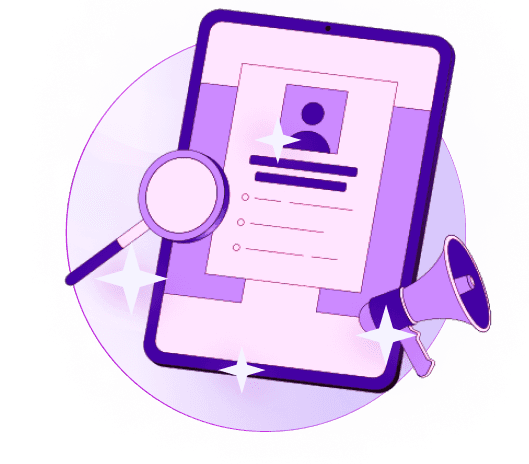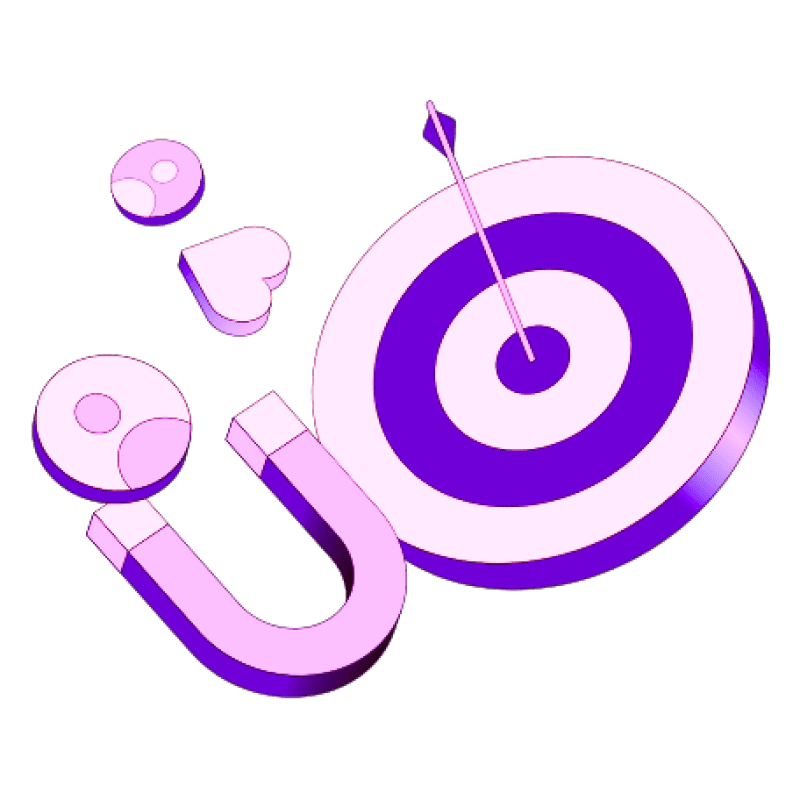Blogs
Articles

Waterfall Enrichment ROI: How to Maximize Data Enrichment Value
Your B2B contact data loses value fast - 30% becomes outdated each year. Picture this: one-third of your precious database turns stale before you know it.
Let me show you why waterfall enrichment ROI beats traditional single-vendor approaches. You'll learn practical ways to set up this multi-vendor waterfall approach that can push your match rates from 60% to over 90%. The best part? It actually cuts down your overall data enrichment costs.
How waterfall enrichment differs from single-vendor methods?
Most companies use just one vendor to fill in missing contact information. This traditional approach only works about 50-60% of the time, leaving half your database with gaps.
Waterfall enrichment takes a different path by checking multiple data providers one after another. The system works like a waterfall - if one vendor can't find the information, it moves to the next one until it finds what you need or runs out of options.
This smart approach creates several benefits:
Higher match rates – Waterfall enrichment can push match rates from ~60% to over 90%, and some companies get email matches up to 93%
Cost efficiency – You pay vendors only when they find what you need, so you don't waste money on failed searches
Specialized expertise – Each vendor shines in different areas (industries, regions, company sizes), giving you better coverage than any single source
Fresher data – Regular updates through multiple vendors help curb the 30% annual decay rate of B2B contact data
How to Set Up a Waterfall Enrichment Process
A systematic plan helps you set up a waterfall enrichment process that works. You'll create a system to maximize match rates and minimize costs by doing this.
Define your data needs and required fields
You need to know exactly what information you're looking for. The data might include email addresses, phone numbers, job titles, company information, or firmographic data. A detailed checklist of required fields for leads and accounts will help. This step is vital because your system must know which fields matter most to route, segment, or reach out to sales. To cite an instance, email addresses could be your main contact method, while job titles could affect account-based marketing by a lot.
Select and prioritize data vendors
Each vendor's specific strengths and specializations should guide your choice. These providers have unique advantages – some are better at verified emails, others excel at direct phone numbers or company data. You should rank providers based on their reliability, cost, and data quality. The best results come from:
Using your strongest data provider with the highest match rate first
Adding lower-cost providers later in the flow as backups
Looking at geographic specialization (Apollo for US, ContactOut for UK, Datagma for France)
Build the waterfall logic and fallback rules
Your waterfall sequence should move from one vendor to the next only when needed. The primary data provider starts by finding missing information. The process ends if successful; if not, the system moves to the next provider. On top of that, it needs rules to protect existing good data – don't let a secondary source overwrite fields that already have verified information. This approach will give a successful hit that you only pay for once.
Integrate with your CRM or data platform
The final step connects your waterfall enrichment process to your CRM system or data platform through APIs or integration tools. This connection matters – enriched data should flow straight into your CRM without manual work. Modern solutions like Persana help implement waterfall enrichment with layered logic, fallback providers, and built-in verification. Each provider's performance needs tracking over time to see how much data they add to your database. The sequence can be adjusted to maintain optimal results if one vendor's performance changes.
Maximizing ROI with Waterfall Enrichment
The financial value of your data enrichment strategy goes way beyond simple match rates. Let's look at how you can get the most from your waterfall enrichment ROI in several important areas.
The impact of data decay on sales and marketing
Your B2B contact data loses accuracy by 2.1% every month. This adds up to a massive 22.5% decline each year. Your sales team ends up wasting precious time chasing outdated contacts - about 546 hours per representative annually. Bad data cuts into 27% of your potential revenue. US companies lose $2.50-3 trillion annually because of poor data quality.
Why match rates matter for ROI
Match rates directly shape your profits. Single-vendor solutions typically reach only 50-60% enrichment rates. Waterfall enrichment can push these numbers up to 80% or higher. A million-record database with a 25% boost in match rates can bring back 100,000 leads you couldn't market to before.
How to calculate enrichment ROI
Your ROI calculation should include:
Database cleanup savings (removing 25-33% of poor records)
Sales efficiency gains (10% boost to each rep's top line)
Cost savings on new leads ($100-$500 per lead vs. $1 for enrichment)
Reducing cost per lead with better match rates
Rich, enriched data helps you target better and can cut cost per lead by at least 20%. You should monitor vendor performance to fine-tune your sequence. Companies that combine enrichment with smart targeting have achieved:
60% CPL reduction for top-of-funnel leads
67% CPL reduction for middle-of-funnel leads
Using pooled credits to manage vendor costs
A pooled credits system helps control your costs. This approach lets you get volume discounts on large data requests. You can set usage caps to avoid too many queries.
Avoiding duplicate payments for failed lookups
Pay-for-success model powers waterfall enrichment - vendors get paid only when they successfully enrich a field. You won't pay twice for failed lookups across different systems. Smart cost management uses conditional logic that triggers secondary enrichment only when primary sources miss specific fields.
Ready to set up an effective waterfall enrichment solution? Persana provides automated enrichment tools that connect to your CRM without coding. You won't need to juggle multiple subscriptions while getting the best ROI from your data enrichment.
Optimizing Performance Over Time
Waterfall enrichment needs constant attention to give you the best results. Your success over time depends on regular improvements rather than a "set and forget" approach.
Track vendor performance and adjust sequencing
You need to watch how your providers perform to get better results. Keep tabs on how much data each vendor adds to your database. Your sequence should change when Vendor C starts performing better than Vendor B. Move down or remove vendors who rarely give useful information, while top performers should get higher spots.
Clean and standardize data before enrichment
Your data must be clean and properly formatted before you start enriching it. This vital step removes duplicates, fixes errors, and makes formats consistent. Clean data helps new information combine smoothly with existing records and prevents integration problems from getting pricey.
Use enrichment insights for segmentation and scoring
Rich data helps you segment audiences better based on:
Roles and seniority levels
Geographic targeting
These detailed profiles make lead scoring more effective. Sales teams can skip unqualified contacts and create personalized messages that boost response rates.
Line up enrichment with pipeline waterfall and sales goals
A well-planned waterfall enrichment boosts your sales funnel by filling data gaps, adding more leads, and making outreach more precise. Better data directly supports your revenue goals and creates a positive feedback loop between data quality and sales performance.
Conclusion
Waterfall enrichment is a game-changer for organizations that want to maximize their data quality and revenue potential. Our analysis in this piece shows how traditional single-vendor approaches fall short. These approaches leave nearly half of valuable contact data incomplete and waste sales resources. Waterfall enrichment boosts match rates from 60% to over 90% while reducing overall costs.
The financial effect of this approach is remarkable. Companies using this multi-vendor approach can boost revenue by 45% or more without changing their product, pricing, or conversion rates. Better data quality flowing through your sales pipeline creates this impressive improvement.
Smart organizations are adopting this sequential approach instead of wasting resources on outdated contacts or missing opportunities with incomplete records. You only invest in successful data enrichment with the pay-for-success model, which eliminates wasted spend on failed lookups.
Want to reshape your data enrichment strategy? Persana.ai offers powerful waterfall enrichment tools that connect directly to your CRM without complex coding requirements. These tools help you achieve those 80%+ match rates while controlling costs.
Key Takeaways
Waterfall enrichment transforms data quality by using multiple vendors sequentially, dramatically improving match rates and ROI compared to single-vendor approaches.
• Waterfall enrichment boosts match rates from 60% to over 90%, compared to single-vendor solutions that achieve only 50-60% coverage
• Revenue can increase by 45% or more simply by improving data enrichment from 55% to 80% without changing products or pricing
• Pay-for-success model reduces costs - you only pay vendors when they successfully enrich data fields, eliminating waste on failed lookups
• Sequential vendor approach maximizes coverage - if one provider fails, the system automatically moves to the next until data is found
• Continuous optimization is essential - track vendor performance, clean data before enrichment, and adjust sequencing based on results

Create Your Free Persana Account Today
Join 5000+ GTM leaders who are using Persana for their outbound needs.
How Persana increases your sales results
One of the most effective ways to ensure sales cycle consistency is by using AI-driven automation. A solution like Persana, and its AI SDR - Nia, helps you streamline significant parts of your sales process, including prospecting, outreach personalization, and follow-up.



